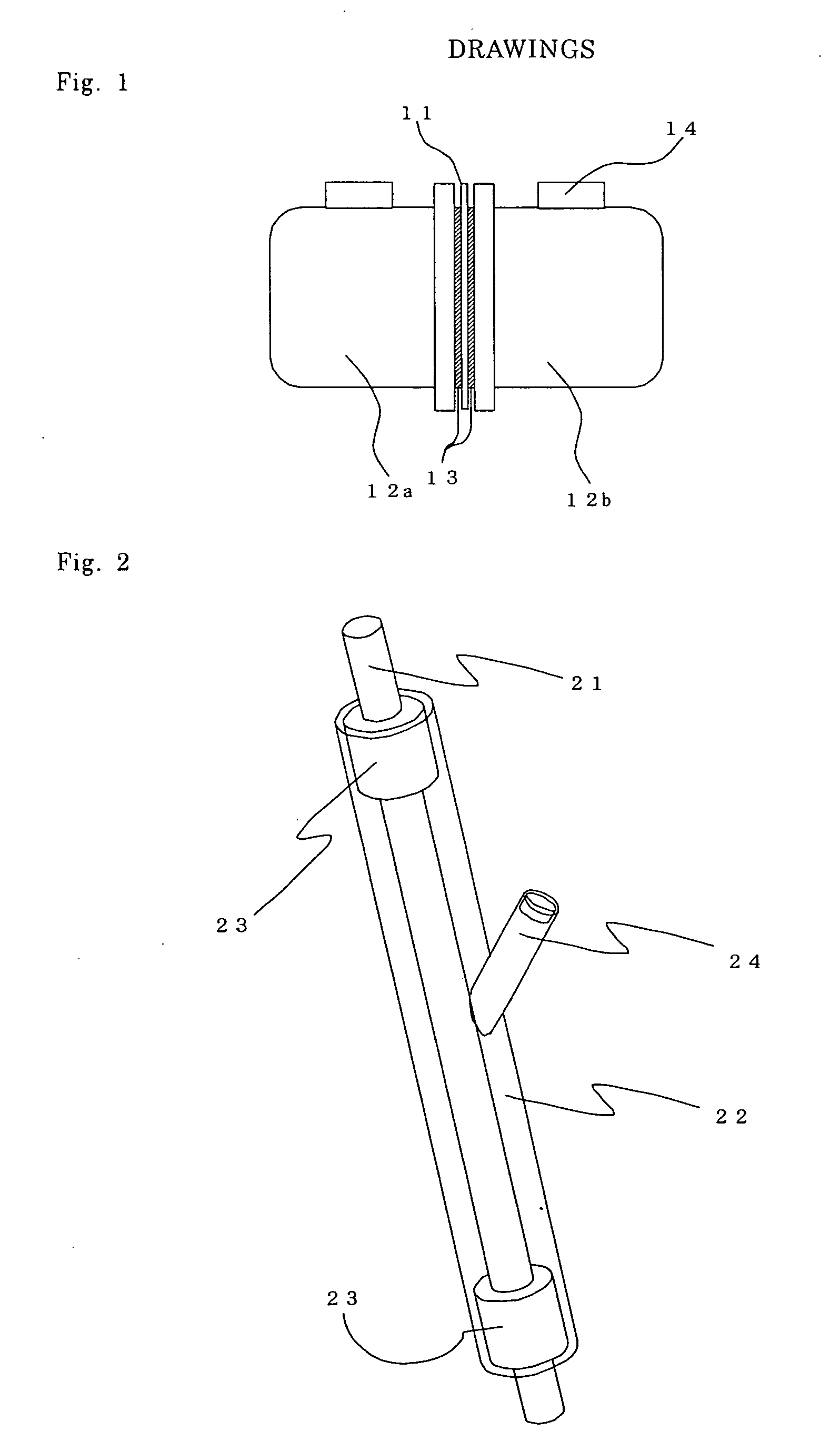Fluid transfer member
a technology of transfer member and fluoride, which is applied in the direction of mechanical equipment, other domestic objects, synthetic resin layered products, etc., can solve the problems of pfa tube, inferior thermal stability of pctfe on the occasion of molding, and relatively high liquid chemical permeability, and achieve low chemical liquid permeability and stress cracking. , the effect of low resistan
- Summary
- Abstract
- Description
- Claims
- Application Information
AI Technical Summary
Benefits of technology
Problems solved by technology
Method used
Image
Examples
example 1
[0148] A jacketed mixing vessel-type polymerizer with a capacity of 400 kg of water was charged with 100 kg of demineralized pure water, and the inside space was sufficiently purged with pure nitrogen gas and then the nitrogen gas was eliminated by evacuation. Then, 200 kg of octafluorocyclobutane, 9.13 kg of chlorotrifluoroethylene [CTFE], 20 kg of tetrafluoroethylene [TFE] and 10 kg of perfluoro(propyl vinyl ether) [PPVE] were fed under pressure to the polymerizer, the temperature was adjusted to 35° C. and stirring was started. Thereto was added 0.5 kg of a 50% (by mass) methanolic solution of di-n-propyl peroxydicarbonate [NPP] to initiate the polymerization. During polymerization, the vessel inside pressure was maintained at 0.68 MPa while additionally feeding a monomer mixture prepared so that the composition thereof might be equal to the desired copolymer composition and, after carrying out the polymerization until arrival of the total additional charge amount at about 10% by...
example 2
[0168] The polymerization and after-treatment were carried out in the same manner as in Example 1 except that 19.3 kg of CTFE and 13 kg of TFE were used in the initial monomer charge, to give 20.6 kg of a CTFE copolymer (B) as a granular powder. Since the CTFE copolymer B obtained had a relatively low melting point, the tetrafluoroethylene / perfluoro(methyl vinyl ether) copolymer [MFA] described later in Comparative Example 4, which had a melting point lower than that of PFA, was used as the inner layer of the laminated tube. The copolymer was measured for adhesion strength with PTFE, without carrying out the adhesion strength measurement with PFA or with FEP. Otherwise, the same physical characteristics evaluations as in Example 1 were carried out. The results are shown in Table 2.
[Copolymer-to-PTFE Adhesion Strength Measurement]
[0169] The CTFE copolymer was compression-molded at a temperature higher by 50 to 70° C. than the melting point thereof and at a molding pressure of 5 MPa...
example 3
[0170] The polymerization and after-treatment were carried out in the same manner as in Example 1 except that 5.8 kg of CTFE and 49.6 kg of TFE were used in the initial monomer charge, to give 24.6 kg of a CTFE copolymer (C) as a granular powder. The CTFE copolymer C obtained was evaluated for the same physical characteristics as in Example 1. The results are shown in Table 2.
PUM
| Property | Measurement | Unit |
|---|---|---|
| temperature | aaaaa | aaaaa |
| temperature | aaaaa | aaaaa |
| thickness | aaaaa | aaaaa |
Abstract
Description
Claims
Application Information
 Login to View More
Login to View More - R&D
- Intellectual Property
- Life Sciences
- Materials
- Tech Scout
- Unparalleled Data Quality
- Higher Quality Content
- 60% Fewer Hallucinations
Browse by: Latest US Patents, China's latest patents, Technical Efficacy Thesaurus, Application Domain, Technology Topic, Popular Technical Reports.
© 2025 PatSnap. All rights reserved.Legal|Privacy policy|Modern Slavery Act Transparency Statement|Sitemap|About US| Contact US: help@patsnap.com



